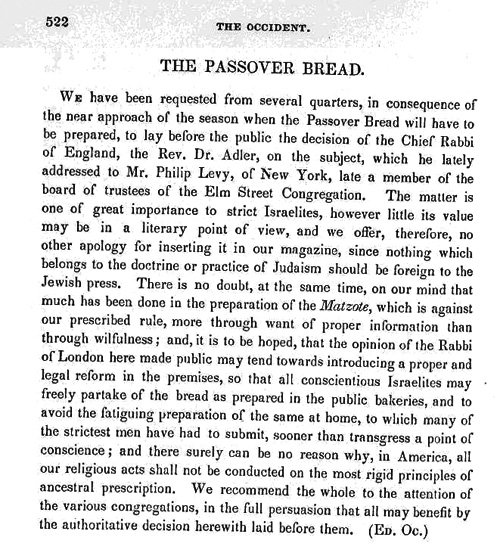The year was 1911. A Jewish butcher bought a libel suit against the "Investigating Officer of the Shecheta Board," as well as against the Jewish Chronicle, for printing an advertisement on February 10 of the prior year that argued that the butcher's meat was treife.
Here is the ad:
As you can see, this sort of announcement must have been fairly routine. Four of these announcements, one top of each other, but only one sued. The butcher, Marcus Hirsch, argued that his meat was not in fact unkosher at all, and he was therefore libeled, by the board (in the person of its inspector, Simon Myers) and by the newspaper. The defendants of course had to argue that it was true. The February 17, 1911 issue gave a lengthy account of the trial proceedings, some of which are quite interesting.
Here is a picture of the
presiding judge, since I can virtually guarantee that reading the following will be more entertaining if you picture it occurring in front of him:
Famed novelist Israel Zangwill was called as an expert witness for the plaintiff. He testified that this Board of Shechita was rejected by one group of London Jews, the ultraorthodox Machzikei Hadass, the point being that it isn't some kind of universal authority on kashrut.
Then a controversy ensued as to whether or not Zangwill was an expert, and whether an expert who admitted he was not expert in all of Jewish law could be an expert. The judge pointed out that many people in the legal profession do not know the entire law which they practice. Zangwill had begun his testimony by giving his qualifications as an expert, saying that he knew much about Jewish law and customs, but when asked, acknowledged that he did not know as much as a rabbi or rabbinical students did. Pressed to be specific by the judge, he said that he could read "all but the most difficult" Hebrew, had learned very little Talmud, but had read much of the Jewish Encylopedia, and parts of the Shulchan Aruch, both in the original and in translation. The lawyer for the defendant wanted him to not be admitted as an expert. Then a discussion about the nature, appointment, and authority of rabbis took place.
In any case, the crux of the matter here was, what authority did the Shechita Board have, and are just any Jews authorized to perform shechita? To be sure, the Board of Shechita was an arm of the London Beth Din under the auspices of the Chief Rabbi. So with that in mind, the Chief Rabbi Hermann Adler was called as witness.
He gave testimony concerning the workings of Jewish law, whether or not there existed a translation of Yoreh Deah, and if there was, would it have any authority (no, he said), what is the process for appointing a shochet, that a simple minyan of ten Jews does not constitute a kehilla (congregation), and he gave a citation from the Pische Teshuva and Be'er Hetev to the effect that if a community had issued a proclamation that only a known shochet can act, then if someone contravenes it, according to some that shechita is forbidden.
Upon cross examination the lawyer made a little to-do over the fact that the law that
kabbalah has to come from a rabbi is a gloss (a
hagah of the Rema) and not in the text of
Yoreh Deah proper! I think we are starting to understand why the case against Hebrew National and Triangle-K was thrown out of court, right? (See
here.) For another example of a failure to understand the role the Rema plays in the Shulchan Aruch, see this earlier post of mine (
here).
When asked about his own authority, Adler said that he basically has authority over all the Jews, except the Reform Jews who kind of sort of recognize his authority - sometimes, and a group of "Liberal Jews" (i.e., Britain's radical Reform) who do not acknowledge his authority at all, and also the group called Machzikei Hadass. Regarding the latter he claimed that their secessionist tendency was no longer an issue and they do at that point in time acknowledge his authority!
Then there was further discussion, really splitting hairs, about which other groups and individual congregations accept his authority. Then it moved back in time to the 18th century, and a detailed examination of the nature of the English rabbinate at that time was discussed, and the fact that they too had shochetim, and how it was that they were appointed.
To be cont.























































